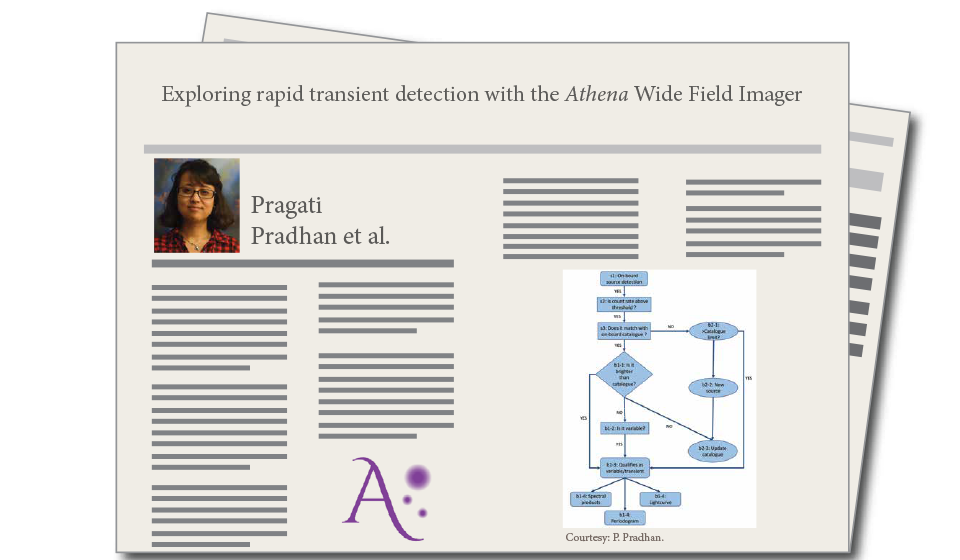
Exploring rapid transient detection with the Athena Wide Field Imager

By Pragati Pradhan
X-ray observatories in space are constantly collecting interesting information on X-ray transient sources that are often stored in huge data archives. Only a few X-ray observatories like Swift/BAT and MAXI, for example, send instant triggers to the ground regarding the occurrence of a transient event. In other cases, long delays (~ weeks to months) occur before these transient phenomena are discovered in the ground analysis by which time the transient event has often died down. In order to mitigate this delay in reporting these (time-sensitive) transient events, we present a simple algorithm to detect X-ray transients with Athena/WFI rapidly. Using simulated WFI data for different types of transients, we show that the 40’x40’ field of view and large effective area of WFI, will permit the detection of a large number of X-ray variable or transient objects daily.
Such a rapid onboard or ground-based detection algorithm will clearly improve our understanding of transients and also facilitate multiwavelength follow-ups with other observatories. Furthermore, with the increased sensitivity of WFI coupled with faster readout times, WFI will also aid in probing fast X-ray transients, which have so far been hindered by current instruments that have a typical readout of seconds. Our rapid detection algorithm of X-ray transients if implemented in Athena/WFI, will not only enrich our understanding of the known transients but will also contribute to the discovery and study of new X-ray transients.

